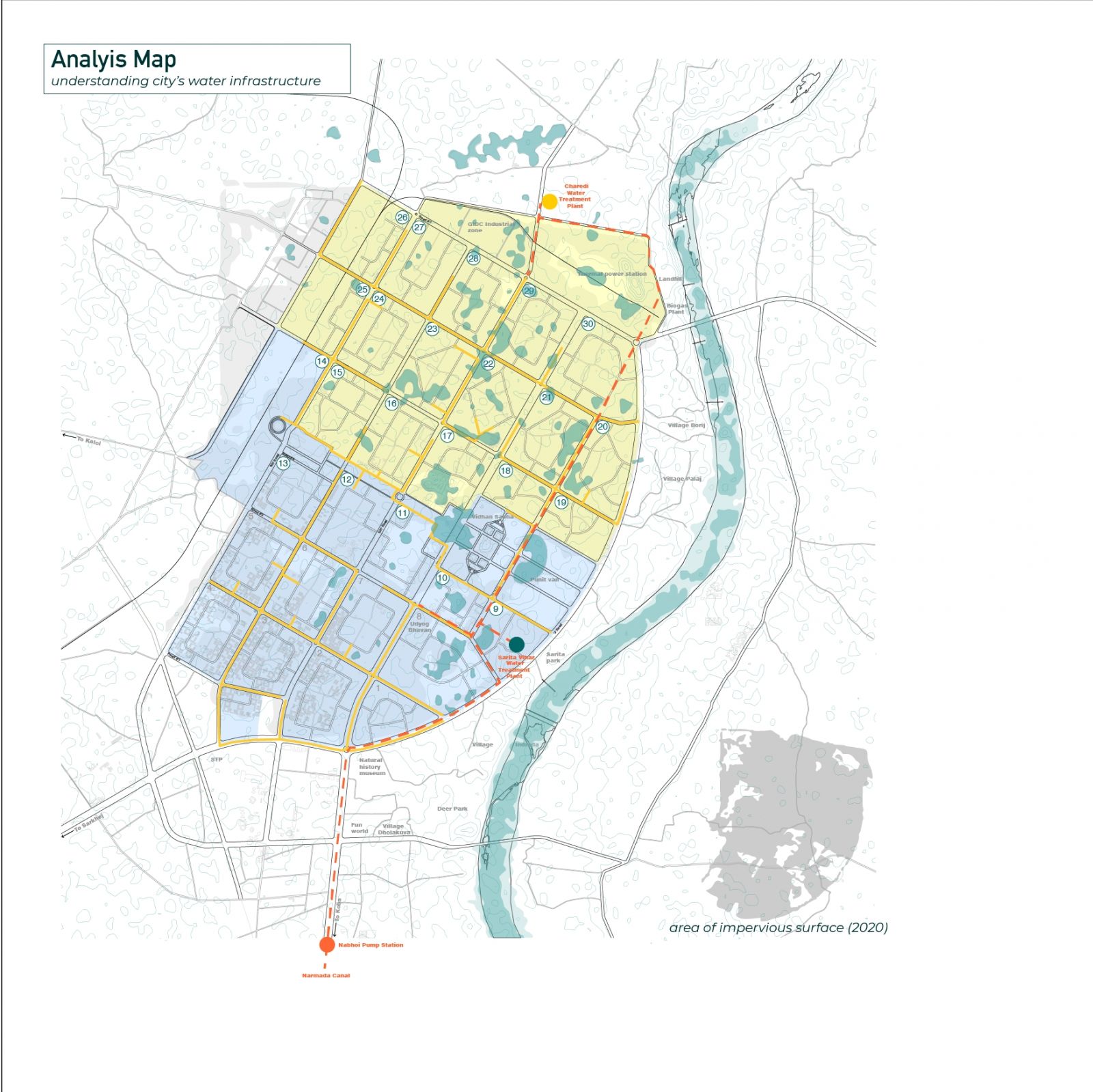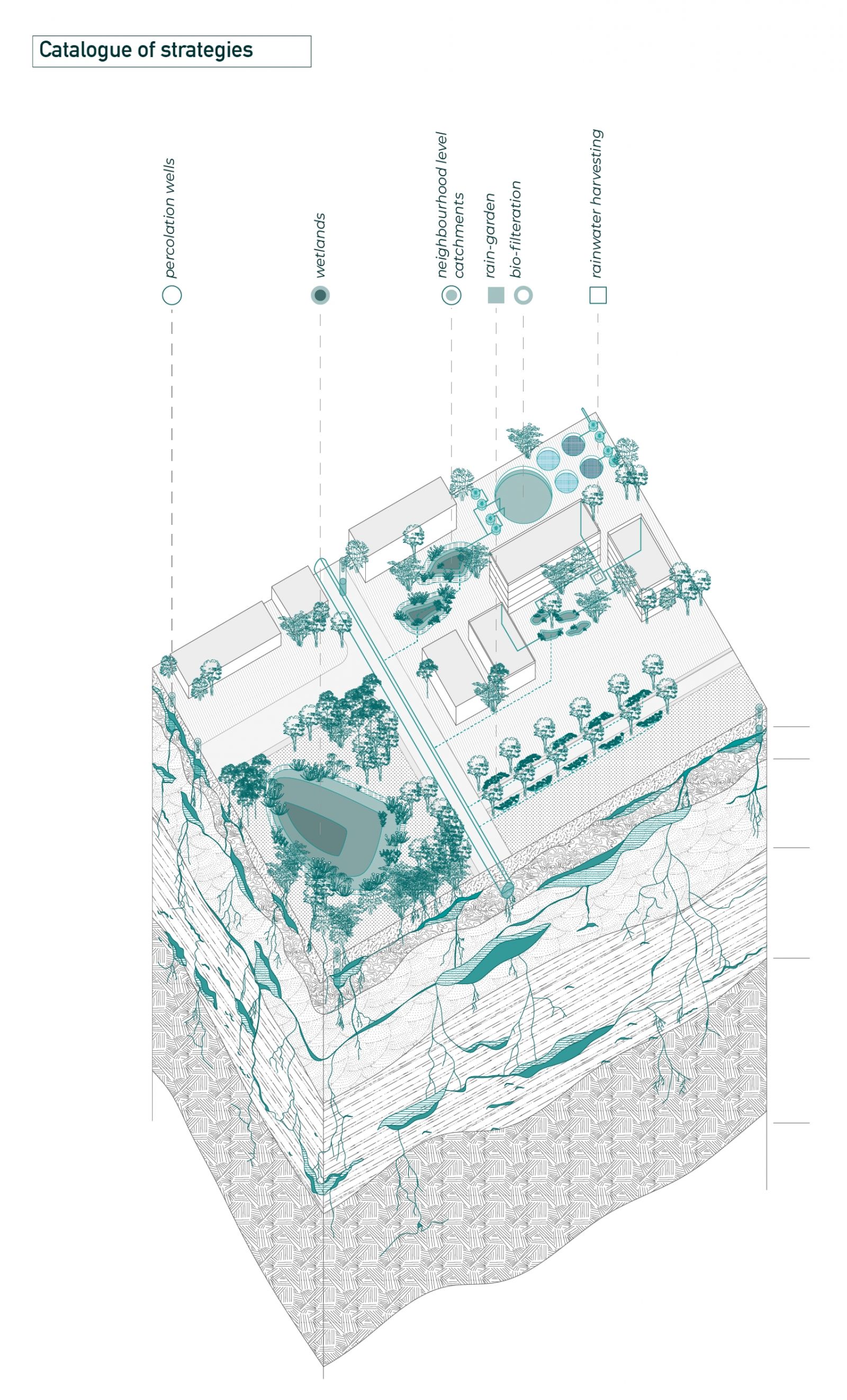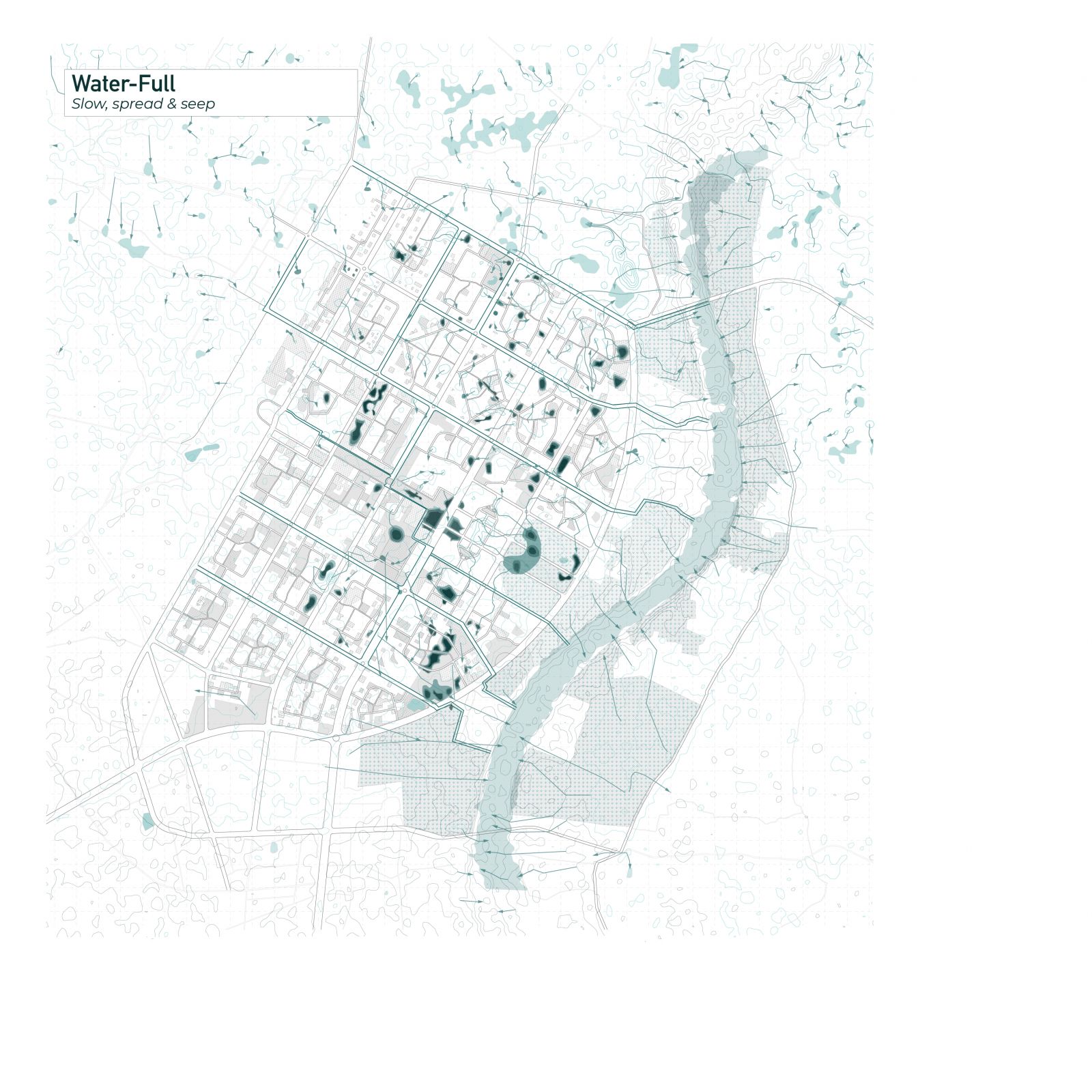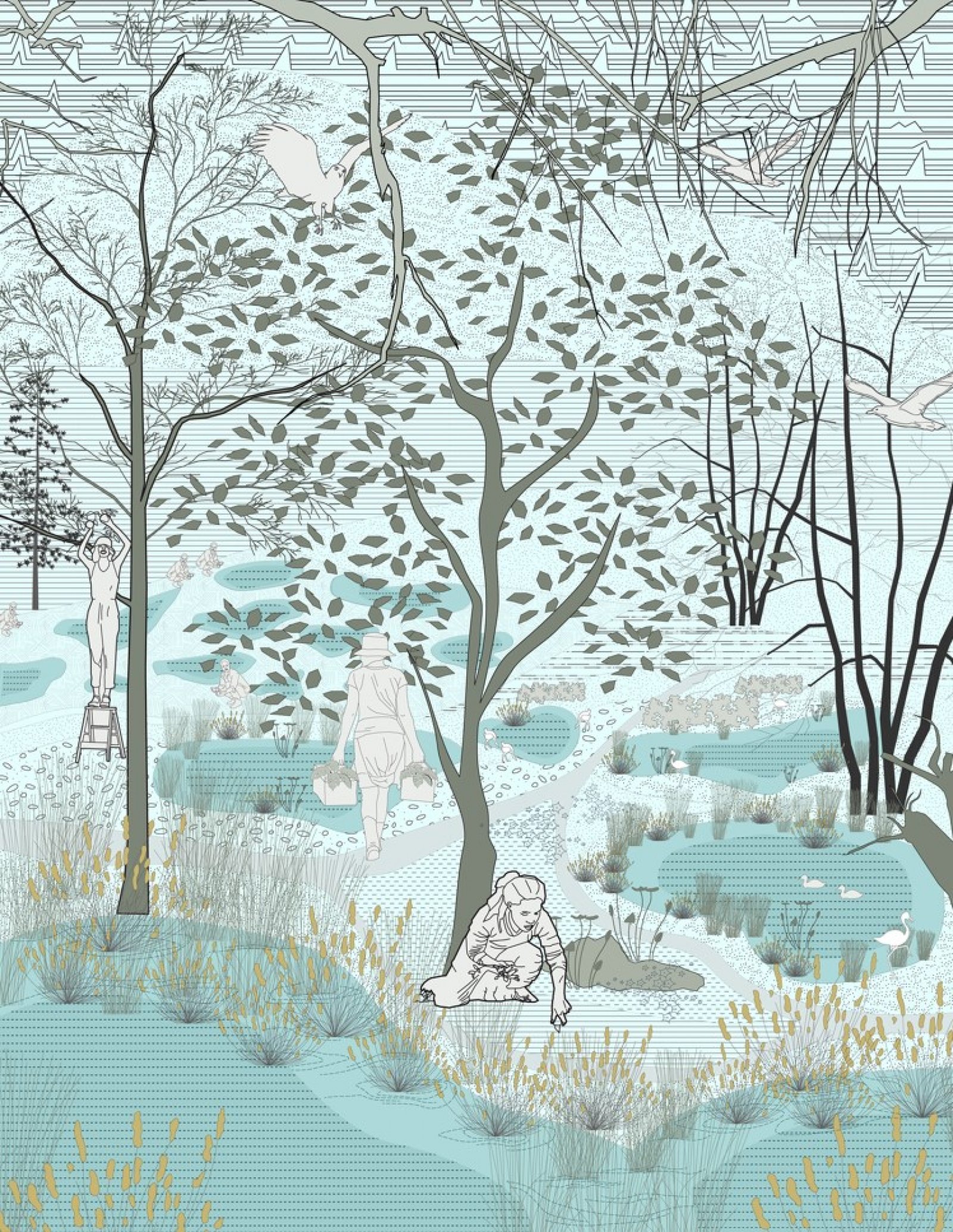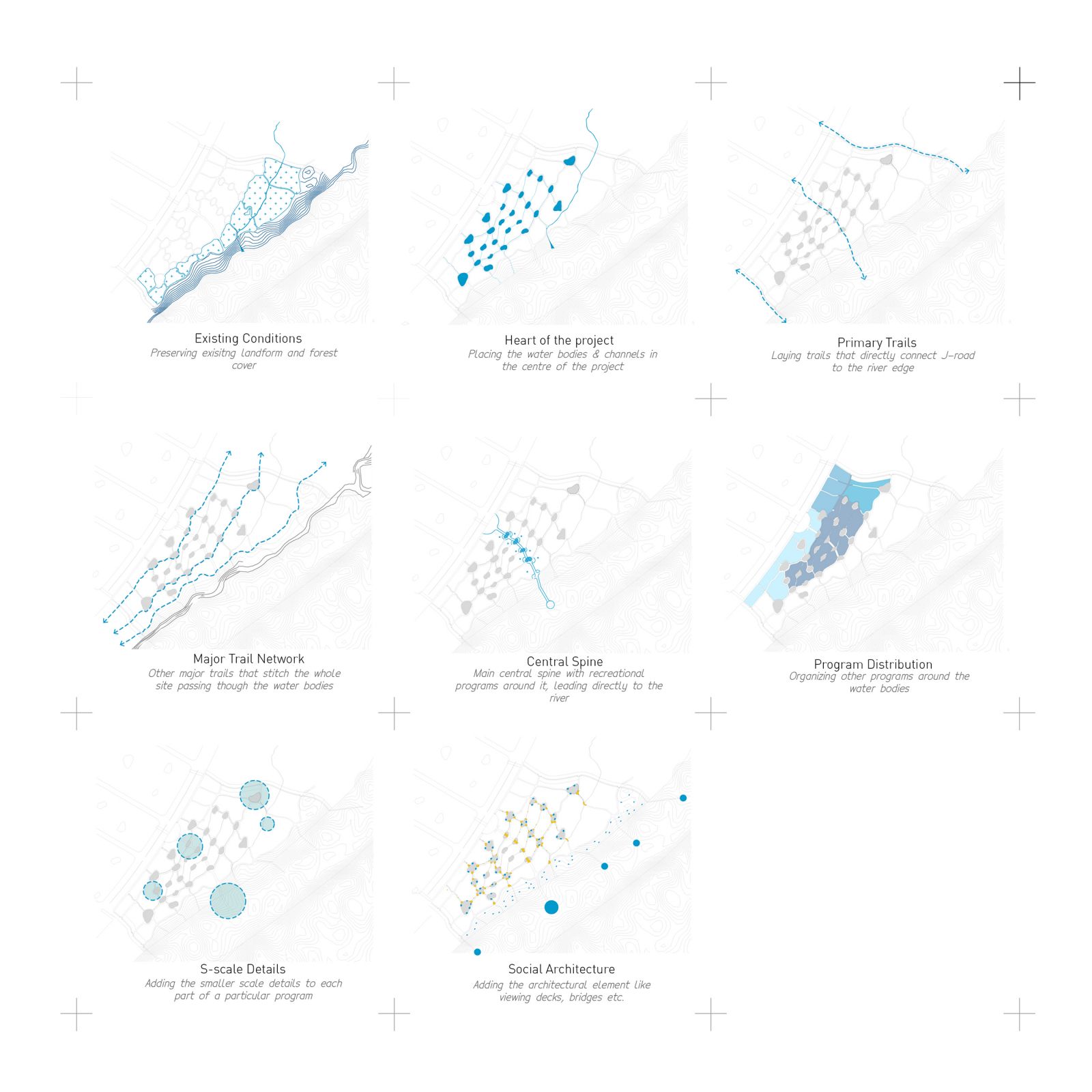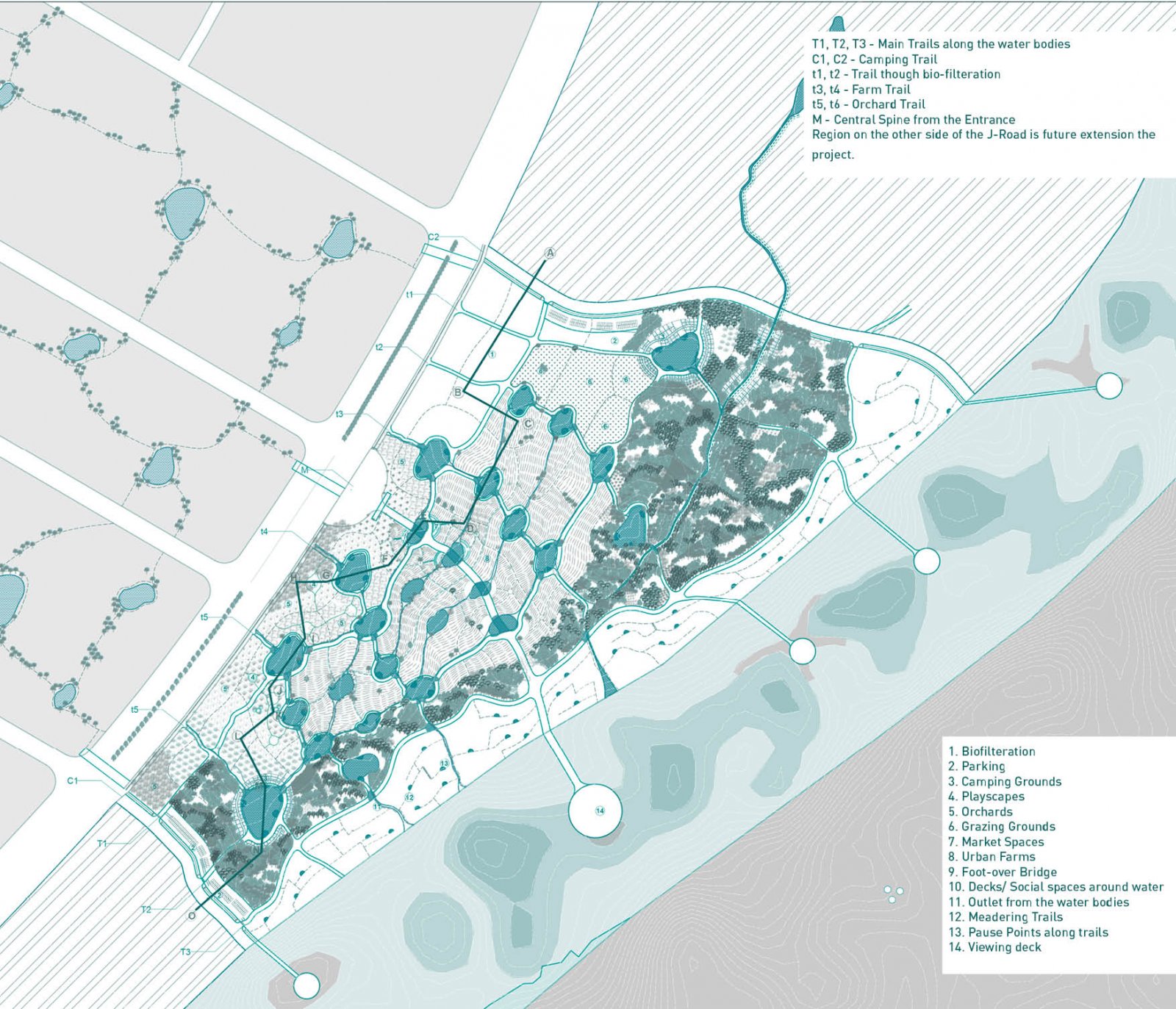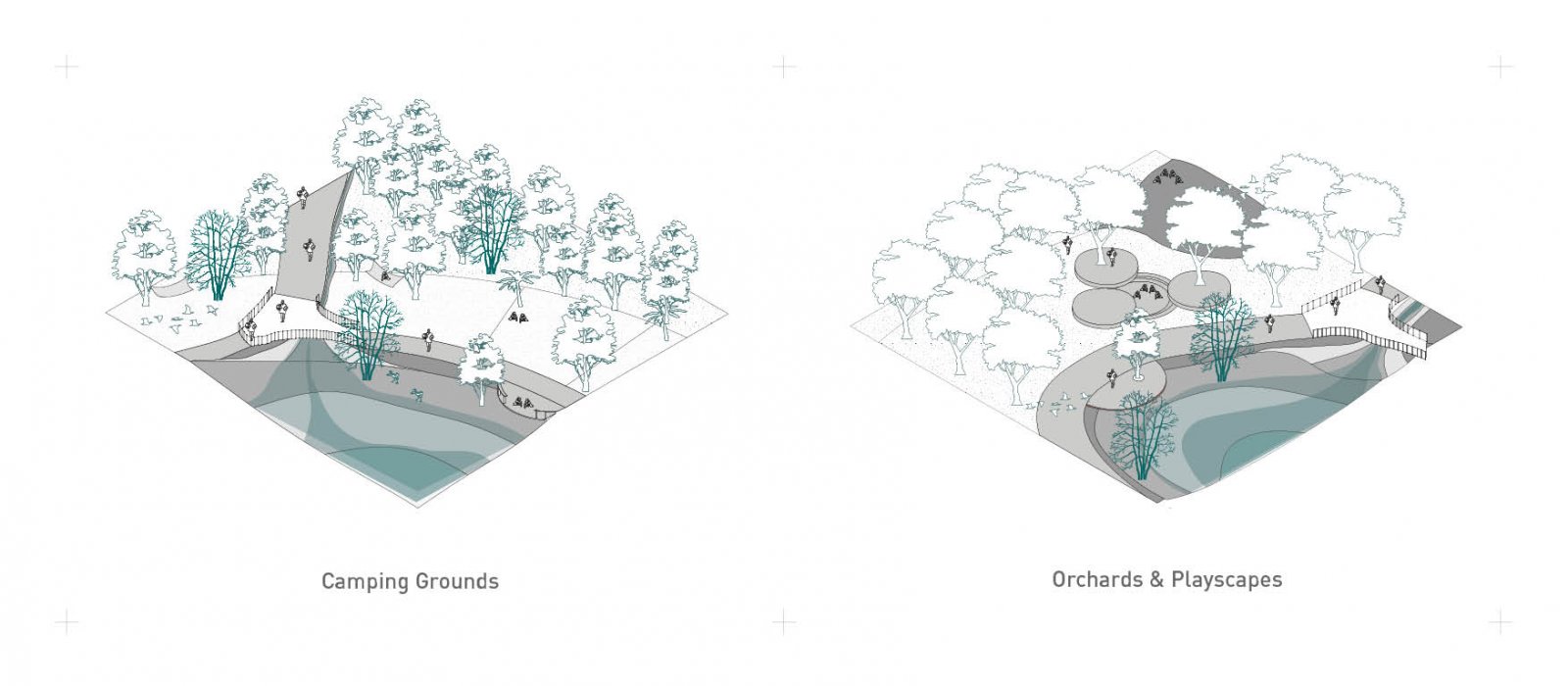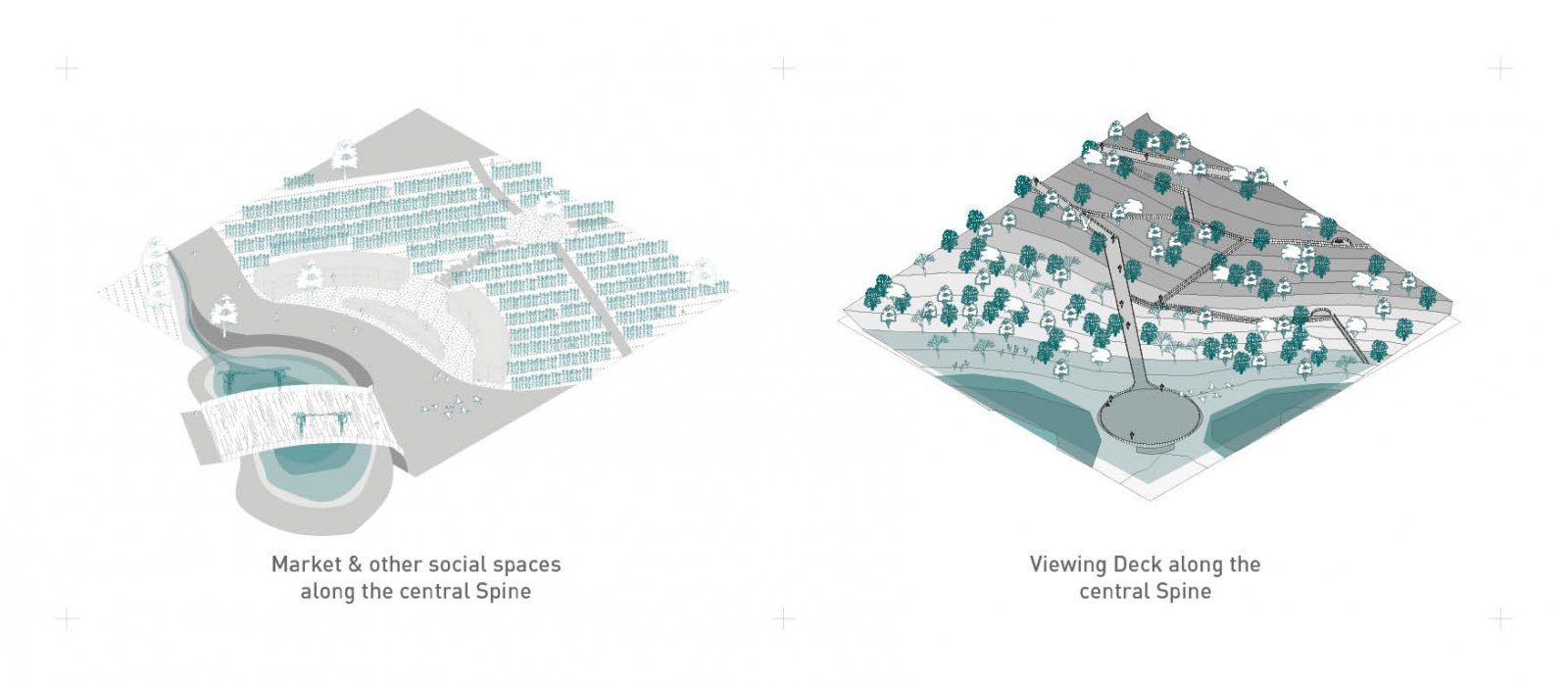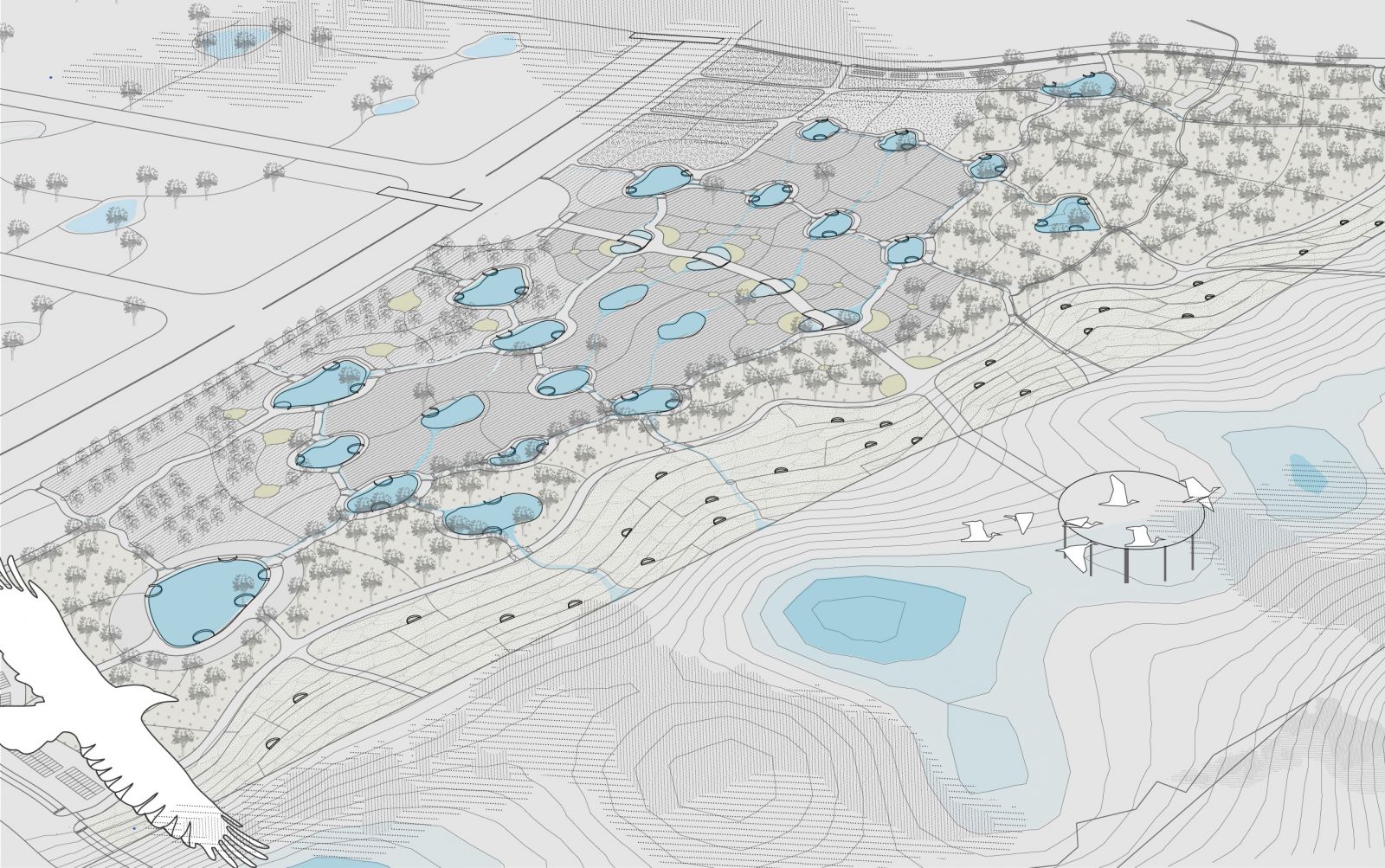Your browser is out-of-date!
For a richer surfing experience on our website, please update your browser. Update my browser now!
For a richer surfing experience on our website, please update your browser. Update my browser now!
Project "Water-full" at Gandhinagar city, aims to apply various strategies at the city level to maximize the infiltration of water and recharge groundwater basins. The strategies include street re-design with swales, catchments, and percolation wells on larger lots. The series of strategies will allow for water to slow, spread, and sink. The same idea is demonstrated and detailed at the main site along the Sabarmati river. There will be a series of connected wetland systems that will clean the city's greywater and stormwater and allow it to percolate into the ground before it runs off into the river. It will also give Gandhinagar residents a productive public space with programs nestled around water and connected through a network of trails. Alongside, making water visible on the site it will naturally become a habitat for bio-diversity. It is expected that the project will increase the groundwater table and facilitate osmosis so that it can continuously feed into the river.
View Additional Work